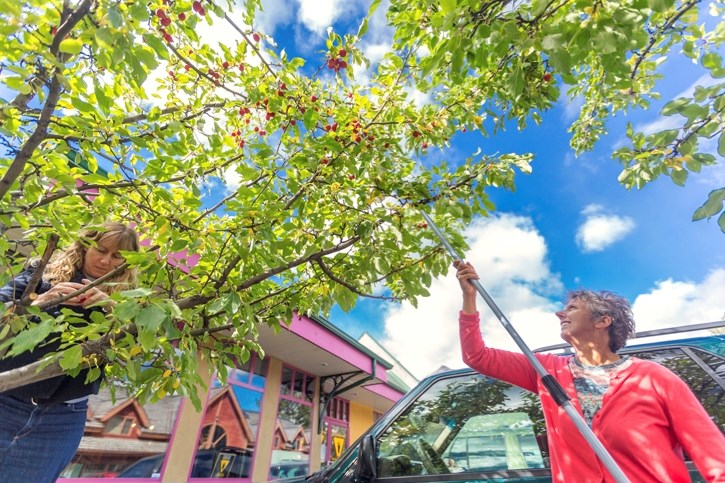CANMORE – Trees located on public property in Canmore will now be protected from damage thanks to a new bylaw unanimously approved by council on (Tuesday) April 2.
The intent of the bylaw is to recognize trees as assets to the community, establish consequences for trees that are damaged or illegally cut down and help the Town establish a fair and consistent process for compensation.
Under the new bylaw, the public will be prohibited from damaging, placing, applying, injecting or spraying any substance on a tree and entering or removing a barrier protecting a tree from construction.
The bylaw will also require people to get a permit from the Town to plant, prune, remove or relocate a tree on public property, even if the tree’s roots or branches are encroaching onto private property. Residents will also need permission to attach objects to a tree on public property, such as Christmas lights or signs.
Fines range from $250 for pruning a tree without permission to $1,000 for damaging or cutting down a tree.
Prior to approving the bylaw, Mayor John Borrowman asked administration how they intend to let the public know about the new rules.
Supervisor of parks Lisa Guest said most homeowners are already pretty good at reaching out to the Town when they are unsure which trees are on their property, but added administration intends to get the message out there by advertising in the newspaper and on Facebook.
“Bylaw takes an education approach whenever they can,” said Sally Caudill, manager of municipal services.
“I want to be clear, the intent is not that [bylaw] is going to suddenly in the winter start driving around and policing for Christmas lights, the issue here is to try and prevent problems and be able to deal with them when they arise.”
According to a staff report, in 2011 the town completed an urban forest management plan that estimated the overall area’s forest canopy was worth $250 million and included a number of recommendations including a process to protect them, however those recommendations were never implemented.
During that time developers and property owners could remove public trees adjacent to their property with little recourse.
As part of the new bylaw, developers will now need to identify and ascertain the value of trees located on public property in their drawings prior to getting approval for construction.
The drawings will then be reviewed by administration and if a tree must be removed administration will first try to work with the developer to find a solution.
In cases where a tree still has to be cut down, the developer will be required to attain written permission from the town and will be required to pay for the full value of the tree, which will be used to plant and maintain new trees in the community.
Developers will also be responsible to set up and maintain a barrier around any public tree that could potentially be damaged during construction. The barrier must be four meters from the trunk of the tree where possible, be buried 1.5 metres in the ground and encompass the tree’s entire canopy.
The new bylaw also included permission for slackliners to use trees to set up their ratchet straps as long as they use large pieces of felt, carpet or another material to protect the trunk of the tree.




